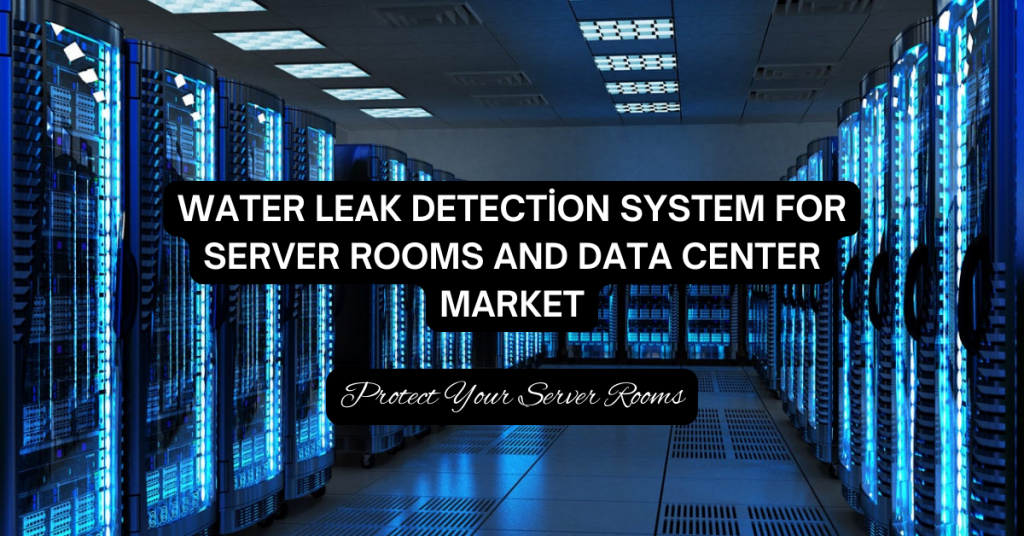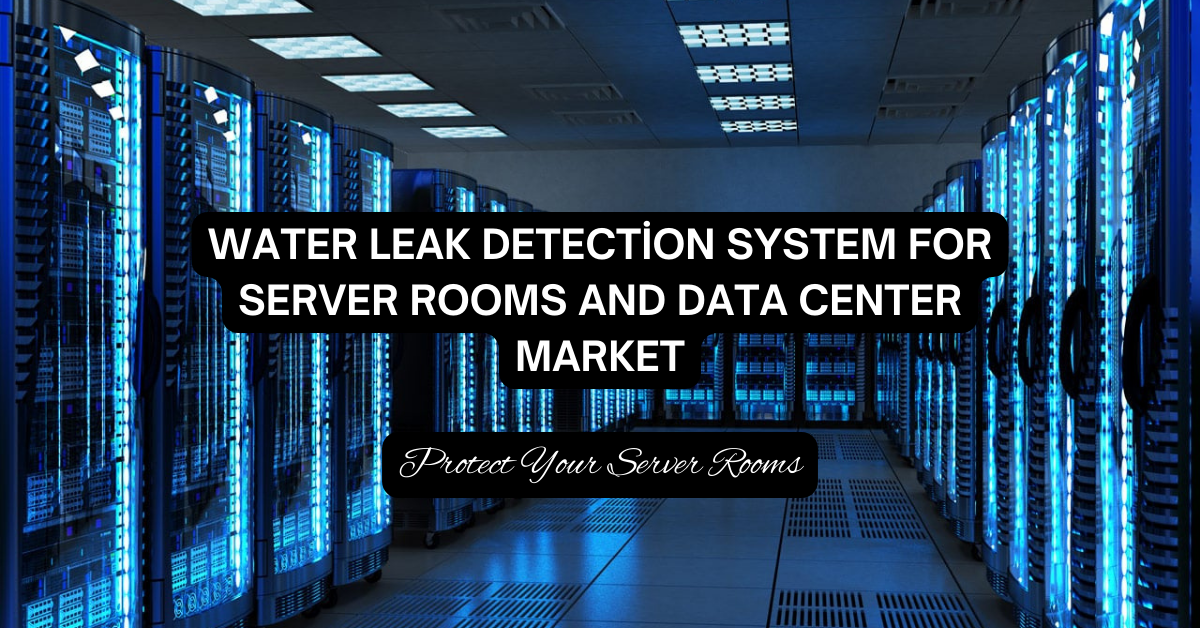
Market Overview
The Water Leak Detection System for Server Rooms and Data Center Market is anticipated to expand from USD 544 million in 2024 to approximately USD 1,395.79 million by 2032, representing a CAGR of 12.5%. This steady growth is largely driven by the escalating importance of protecting critical IT infrastructure from water-related damages. As digital transformation accelerates globally, data centers and server rooms are becoming fundamental assets that require robust risk mitigation measures.
Leak detection systems offer a crucial safeguard by enabling early identification of water intrusion, helping avoid costly downtime and hardware failures. This market gains significance amid increasing global data consumption, cloud adoption, and the proliferation of hyperscale data centers. Preventative maintenance and risk management strategies now prioritize leak detection as essential for operational continuity.
Additionally, heightened awareness of environmental hazards, rising investments in data center infrastructure, and strict compliance requirements contribute to the expanding footprint of these systems. Organizations across industries such as BFSI, government, healthcare, and IT telecom recognize the imperative of securing data centers against environmental threats. This shift underpins growing market investments and technological advancements focused on enhanced sensitivity, remote monitoring, and smart integration features within leak detection systems.
Market Drivers
Increasing IT Infrastructure Investments
Organizations worldwide are investing heavily in expanding and upgrading their IT infrastructure to meet growing digital demand. This increase fuels the need for comprehensive protection solutions, including water leak detection, to ensure uninterrupted data processing and storage. As companies adopt cloud computing and data analytics, the volume and value of stored data grow exponentially, making the protection of physical infrastructure a top priority. Additionally, the rise in regulatory compliance requirements regarding data security drives organizations to implement proactive safeguards. These investments also reflect a broader trend toward digital resilience, where businesses aim to reduce downtime and protect their reputation through advanced monitoring technologies.
Expansion of Hyperscale and Edge Data Centers
The surge in hyperscale and edge data centers, driven by IoT and 5G deployment, has heightened the requirement for specialized leak detection systems. These facilities demand scalable and reliable monitoring solutions to manage their distributed infrastructure efficiently. Hyperscale data centers, with their vast physical footprint, increase the complexity of leak detection, requiring systems that can cover larger areas without compromising accuracy. Similarly, edge data centers, often located in remote or challenging environments, necessitate compact and energy-efficient detection devices. Together, these trends create opportunities for vendors to innovate with modular and wireless systems that integrate seamlessly with other infrastructure management tools.
Advancements in Sensor Accuracy and Connectivity
Ongoing technological progress in sensor technology, such as improved sensitivity and wireless connectivity, is enabling more effective leak detection systems. Integration with building management and IT monitoring systems enhances real-time response capabilities. Modern sensors can detect minute traces of moisture or water vapor before leaks escalate, enabling preventative action. Moreover, connectivity improvements allow these sensors to send alerts instantly to remote monitoring centers, facilitating rapid incident response. This connectivity also supports data aggregation and analytics, which helps optimize maintenance schedules and reduce false alarms, ultimately lowering operational costs for data center operators.
Emphasis on Risk Mitigation and Disaster Recovery
Data centers are increasingly focusing on comprehensive risk mitigation strategies. Water leak detection is now integral to disaster recovery plans, reducing potential downtime and minimizing data loss due to environmental hazards. By integrating leak detection with broader emergency response protocols, organizations can accelerate incident resolution and recovery efforts. Many enterprises are adopting multi-layered protection strategies, where water leak detection works alongside fire suppression, HVAC monitoring, and physical security. The financial implications of even a short disruption in data center services reinforce the critical role of leak detection systems in maintaining business continuity and safeguarding brand value.
Market Challenges
High Costs of Upgrading Legacy Infrastructure
Many existing data centers operate with older infrastructure not designed for integrated leak detection. Retrofitting these facilities involves considerable costs and technical challenges, which can hinder widespread adoption. Legacy facilities may require extensive downtime during installation, disrupting operations and increasing expenses. Additionally, integrating new sensors with outdated building management systems can pose compatibility issues, requiring custom engineering solutions. These financial and logistical barriers often delay upgrades, especially in mid-sized or budget-constrained organizations, limiting the market potential for advanced leak detection solutions in this segment.
Limited Skilled Workforce for Installation and Maintenance
The specialized nature of installing and maintaining advanced leak detection systems requires skilled professionals. The shortage of trained personnel limits the ability of some organizations to implement these solutions efficiently. Technical expertise is needed not only for installation but also for calibrating sensors, configuring alerts, and integrating systems with IT networks. Training programs and certification for leak detection system specialists remain limited in many regions. This workforce gap can lead to improper system setup, reducing reliability and undermining customer confidence in the technology.
Market Fragmentation and Diverse Standards
The market comprises a broad range of products with varying technologies and standards, causing fragmentation. Lack of uniformity complicates integration and can confuse buyers, slowing overall market growth. Buyers may face difficulties in selecting compatible components or ensuring interoperability with existing infrastructure. Furthermore, the absence of widely accepted industry standards for water leak detection in data centers leads to inconsistent product quality and performance. Vendors are increasingly called upon to collaborate on standardization initiatives, which will be crucial for scaling adoption and simplifying system deployment.
Concerns Over System Reliability and False Alarms
Some end-users express concerns regarding system reliability, especially false alarms that can disrupt operations. These doubts may delay investment decisions, necessitating improvements in system accuracy. False positives can trigger unnecessary emergency responses or shutdowns, leading to operational inefficiencies and increased costs. To address this, manufacturers are focusing on enhancing sensor specificity and employing data analytics to filter out noise and reduce false alerts. Building trust through transparent performance data and pilot installations is essential for market expansion, especially in high-stakes environments like data centers.
Market Opportunity
Growth in Managed Services and Colocation Data Centers
The rise of managed services and colocation data centers presents substantial opportunities for water leak detection providers. These multi-tenant environments require robust, scalable detection systems tailored to complex infrastructures. Providers can leverage this trend by offering customized solutions that support remote monitoring and multi-client management. Additionally, the competitive nature of colocation markets incentivizes operators to invest in superior risk mitigation technologies to attract and retain clients. This segment’s growth is expected to drive demand for integrated platforms combining leak detection with power and environmental monitoring.
Integration with Building Automation Systems (BAS)
The growing adoption of BAS in smart buildings offers a pathway to integrate water leak detection with broader environmental controls, enhancing efficiency and centralized management. BAS platforms enable data center operators to manage multiple risk factors through a unified interface, improving response coordination. This integration also supports energy savings by optimizing HVAC systems based on environmental data. As smart building adoption expands, water leak detection systems will increasingly be embedded as core components, facilitating predictive analytics and proactive maintenance workflows.
Increasing Focus on Predictive Maintenance
Predictive maintenance models, leveraging sensor data and analytics, create opportunities for advanced leak detection systems to predict and prevent failures before they occur, reducing costs and downtime. Machine learning algorithms can identify patterns indicative of emerging leaks, allowing for early intervention. This approach extends the lifespan of critical infrastructure and reduces emergency repairs, yielding significant cost savings. Vendors that incorporate AI capabilities into their solutions will gain a competitive edge, meeting the growing demand for intelligent, self-optimizing data center management tools.
Demand from Emerging Markets and Developing Economies
Emerging markets, especially in Asia Pacific and Latin America, are rapidly building their data center capacities. These regions represent untapped markets for innovative leak detection solutions adapted to local infrastructure needs. Factors such as urbanization, digitalization, and government initiatives to boost IT ecosystems drive growth in these areas. However, cost sensitivity and infrastructure variability require providers to offer flexible, scalable, and affordable solutions. Partnerships with local integrators and service providers can help overcome market entry barriers and foster sustainable growth.
Market Segmentation
Based on Offering
- Water Leak Detection System For Server Rooms
- Water Leak Detection System For Data Center
Based on Product Type
- Active Leak Detection
- Passive Leak Detection
Based on Technology
- Infrared
- Ultrasonic
- Thermal Imaging
Based on Component
- Sensors
- Alarm Panels
- Cables
Based on Application Area
- Floors
- Ceilings
- Walls
Based on Type of Data Center
- Enterprise Data Centers
- Managed Services Data Centers
- Colocation Data Centers
- Cloud Data Centers
Based on End-user
- IT & Telecom
- BFSI
- Government
- Manufacturing
- Transportation
- Others
Based on Region
- North America
- U.S.
- Canada
- Mexico
Europe
- Germany
- France
- U.K.
- Italy
- Spain
- Rest of Europe
Asia-Pacific
- China
- Japan
- India
- South Korea
- Southeast Asia
- Rest of Asia-Pacific
Latin America
- Brazil
- Argentina
- Rest of Latin America
Regional Analysis
North America
North America remains the largest market due to its advanced IT infrastructure and proactive regulatory environment. The U.S. leads adoption with high demand from cloud providers and financial institutions prioritizing infrastructure safety. Additionally, ongoing government initiatives to promote cybersecurity and data center resilience bolster demand for comprehensive monitoring systems. The presence of numerous global hyperscale data center operators further accelerates investment in water leak detection technologies. Canada is also emerging as a key player, driven by increasing cloud infrastructure development and compliance requirements.
Europe
Europe’s market is propelled by stringent data protection regulations and investments in smart infrastructure. The UK, Germany, and France are particularly active in implementing water leak detection in data centers. The European Union’s focus on sustainability and green building certifications encourages the integration of leak detection with energy management systems. Moreover, the prevalence of colocation data centers in these countries stimulates demand for multi-tenant adaptable solutions. Regional collaboration on standardizing data center safety practices further supports market growth and technology innovation.
Asia Pacific
Asia Pacific shows the highest growth rate driven by expanding IT infrastructure, increasing cloud adoption, and government-backed smart city projects in countries like China, India, and Japan. Rapid digitization and mobile internet penetration create huge data processing demands requiring resilient data centers. Governments in the region are investing heavily in infrastructure development, with incentives for advanced monitoring and safety systems. The competitive data center landscape fuels adoption of cutting-edge leak detection technologies, with local players also innovating to meet regional requirements and cost constraints.
Latin America
Latin America is gradually growing as financial institutions and telecommunication sectors upgrade their IT facilities. Brazil and Argentina are notable contributors, though budgetary constraints remain a challenge. Political and economic instability in some countries slows infrastructure investment but digital transformation trends are driving steady progress. Increasing awareness of data center risks and insurance requirements encourage deployment of leak detection systems. Regional partnerships and tailored financing models may accelerate market penetration in the near future.
Middle East & Africa
This region is gaining momentum, particularly in the Gulf Cooperation Council (GCC) countries and South Africa, due to rising digitization and investments in data centers aligned with regional digital transformation goals. The Middle East’s strategic position as a data hub for Europe, Asia, and Africa fuels growth in hyperscale and colocation facilities. Investments in renewable energy and sustainability also support adoption of integrated monitoring solutions. In Africa, expanding telecommunications networks and cloud adoption offer emerging opportunities despite infrastructure challenges. Governments are increasingly recognizing the need for resilient, secure data center operations to support economic growth.
Top Companies
- Halma
- Honeywell International Inc.
- IBM Corporation
- Mueller Water Product
- Bosch Sicherheitssysteme GmbH
- Aquilar
- NEC Corporation
- Pentair Plc
- LeakTronics
- Dorlen Products Inc.
Future Outlook
- Growing adoption of AI-powered leak detection systems will enhance predictive maintenance capabilities and reduce operational costs for data centers.
- Increasing focus on green data centers will create demand for eco-friendly leak detection solutions supporting sustainability initiatives.
- Rising deployment of hyperscale and colocation data centers in Asia-Pacific will drive market expansion opportunities for leak detection vendors.
- Integration of water leak detection with smart building automation systems will offer vendors new growth avenues in commercial real estate.
- Cloud-based monitoring platforms will gain traction as organizations seek remote access, real-time alerts, and analytics-driven decision-making.
- Vendors will focus on developing scalable and modular leak detection solutions to cater to diverse facility sizes and customer budgets.
- The demand for cybersecure and encrypted leak detection systems will rise as concerns over IoT vulnerabilities continue to grow.
- Partnerships between leak detection solution providers and data center facility management companies will strengthen market penetration.
- Emerging economies will offer long-term growth potential as awareness about infrastructure safety and disaster prevention increases.
- Advancements in sensor technologies and machine learning algorithms will enhance detection accuracy and reduce false alarm rates.











